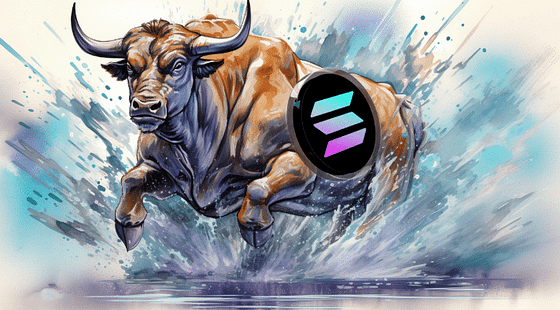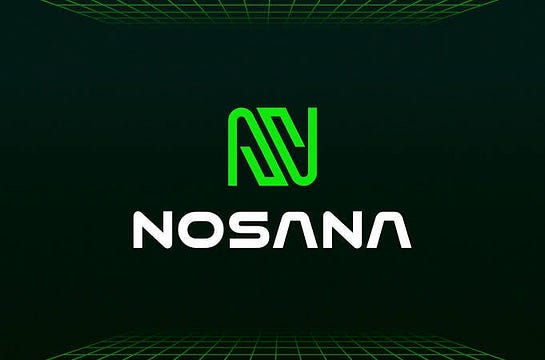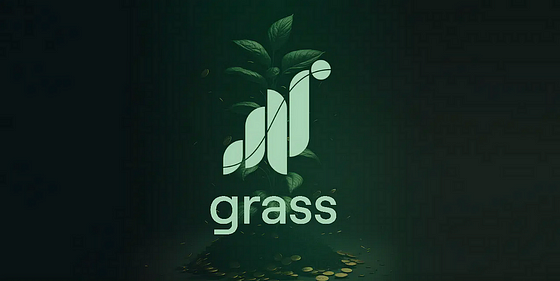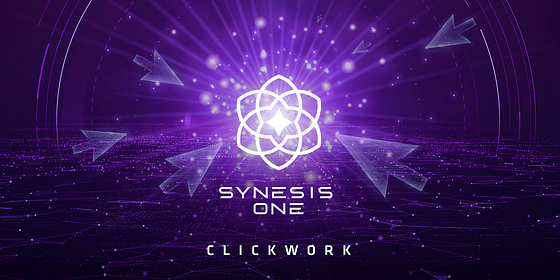5 AI-Crypto Ventures on Solana to Keep Tabs on During the Bull Run
As the cryptocurrency market heats up, Solana has emerged as a popular platform for AI-Crypto ventures, offering high-speed transactions and low fees. Keeping tabs on these projects can provide valuable insights into the intersection of artificial intelligence and blockchain technology. One such project is Solana’s Serum DEX, which leverages AI algorithms to enhance trading efficiency and liquidity. Another noteworthy venture is Raydium, a decentralized exchange and automated market maker that utilizes Solana’s fast transaction speeds to enable efficient AI-powered trading strategies. Pyth Network is also making waves with its real-time market data oracle, providing crucial information for AI-driven trading algorithms. The Solana ecosystem is further enriched by the presence of Oxygen, a DeFi platform that integrates AI to optimize lending and borrowing protocols. Lastly, Mango Markets stands out as a decentralized exchange that incorporates AI for advanced trading strategies, offering users a competitive edge during the bull run.
Pyth Network is also making waves with its real-time market data oracle, providing crucial information for AI-driven trading algorithms. The Solana ecosystem is further enriched by the presence of Oxygen, a DeFi platform that integrates AI to optimize lending and borrowing protocols. Lastly, Mango Markets stands out as a decentralized exchange that incorporates AI for advanced trading strategies, offering users a competitive edge during the bull run.
What is Solana?
Solana is a high-performance blockchain platform designed for decentralized applications and crypto-currencies. It aims to provide a fast, secure, and scalable infrastructure for decentralized applications and crypto-currencies. Solana uses a unique approach called Proof of History (PoH) combined with a Proof of Stake (PoS) consensus mechanism to achieve high throughput and low latency, capable of processing thousands of transactions per second (TPS).
This makes Solana suitable for applications that require high-speed transactions, such as decentralized finance (DeFi), non-fungible tokens (NFTs), and gaming. Solana also offers low transaction fees and has gained popularity among developers for its developer-friendly environment and growing ecosystem of decentralized applications (dApps) and projects.
What are AI-Crypto ventures?
AI-Crypto ventures are projects and companies that combine artificial intelligence (AI) with blockchain technology to create innovative solutions in the cryptocurrency space. These ventures leverage AI algorithms to enhance various aspects of cryptocurrency trading, investing, and decentralized finance (DeFi). For example, AI-Crypto ventures may use AI for market analysis, trading strategies, risk management, and fraud detection.
They aim to improve the efficiency, security, and transparency of cryptocurrency transactions and investments. By integrating AI into blockchain technology, these ventures seek to automate and optimize processes, making them more accessible and profitable for users. Overall, AI-Crypto ventures represent the intersection of two cutting-edge technologies, offering new opportunities and possibilities in the cryptocurrency ecosystem.
Overview of AI-Crypto projects on Solana
AI and crypto are coming together on the Solana blockchain, aiming to leverage each other’s strengths. Here’s a quick rundown:
What’s happening:
- Solana’s strengths: Solana is known for its speed, scalability, and low transaction fees, making it an attractive platform for AI applications.
- AI integration: AI can potentially improve efficiency and functionalities within the Solana ecosystem. This could include streamlining DeFi processes, analyzing data on the blockchain, and even identifying risks in smart contracts.
Top 5 AI-Crypto Ventures on Solana
1. Nosana
 Nosana is a project on the Solana network aiming to revolutionize AI computing by providing a cost-effective decentralized GPU grid specifically designed for AI tasks like inference. Here’s a breakdown of Nosana’s key features:
Nosana is a project on the Solana network aiming to revolutionize AI computing by providing a cost-effective decentralized GPU grid specifically designed for AI tasks like inference. Here’s a breakdown of Nosana’s key features:
- Decentralized GPU Grid: Nosana creates a network of users with spare GPU power (graphics processing units) to rent to those needing it for AI tasks. This distributed approach aims to significantly reduce costs compared to traditional cloud solutions.
- AI Inference Focused: The grid is optimized for AI inference, which involves using trained AI models to make predictions or classifications based on new data. This focus allows for efficient resource allocation and faster processing.
- Monetization for Users: Anyone with a spare GPU can contribute to the Nosana network as a “Nosana Node” and earn rewards in the form of the $NOS token. They estimate earnings to be 10–15 times higher than traditional crypto mining pools.
- Cost-Effective for Businesses: Businesses requiring substantial GPU power for AI projects can leverage the Nosana grid for significant cost savings, potentially up to 85% less compared to public cloud options.
- Security and Scalability: Nosana emphasizes secure access to GPU nodes with user control over scaling their computational needs. They ensure data and intellectual property protection.
- Environmentally Friendly: By utilizing underused resources, Nosana presents a greener alternative to large data centers with high energy consumption.
2. Grass
 Grass is another interesting crypto project on the Solana blockchain focusing on the intersection of AI and web data. Here’s what Grass offers:
Grass is another interesting crypto project on the Solana blockchain focusing on the intersection of AI and web data. Here’s what Grass offers:
- Decentralized AI Data Layer: Grass aims to create a marketplace for public web data used to train AI models. This disrupts the current model where big tech companies control vast amounts of data, hindering open-source AI development.
- Monetizing Unused Bandwidth: Individuals can contribute to the Grass network by installing a browser extension that utilizes their unused internet bandwidth to collect publicly available web data. Users earn rewards for their contributions.
- Passive Income Potential: Grass incentivizes participation through a points system that can be converted into rewards. There’s also the potential for future tokenized rewards.
- Open Source Focus: While Grass utilizes the collected data for some purposes currently, they plan to make it open-source in the future, fostering a more equitable and accessible AI landscape.
- Focus on Security and Privacy: Grass prioritizes user privacy by only collecting publicly available data and anonymizing user contributions.
3. Synesis One
 Synesis One is a project on the Solana blockchain that falls under the category of AI and crypto. Here’s a closer look at what Synesis One brings to the table:
Synesis One is a project on the Solana blockchain that falls under the category of AI and crypto. Here’s a closer look at what Synesis One brings to the table:
Democratizing AI Development:
- Train2Earn Model: Synesis One uses a “train2earn” approach, allowing anyone to participate in training AI models by completing microtasks like data labeling and annotation. Users are rewarded with the $SNS cryptocurrency for their contributions.
- Data Crowdsourcing Platform: It functions as a data crowdsourcing platform where companies can access high-quality training data generated by the user community. This distributed approach aims to make AI development more accessible and inclusive.
Transparency and User Benefits:
- Micro-Task Focus: By focusing on micro-tasks, Synesis One aims to overcome challenges associated with traditional data collection methods, such as low pay and high withdrawal minimums.
- Mobile and Web Accessibility: The platform offers user-friendly mobile apps and web interfaces, making participation convenient for a wider audience.
Earning Opportunities:
- Kanon NFTs: Synesis One utilizes Kanon NFTs, which users can stake to gain access to games within the ecosystem. These games further incentivize data creation and participation.
- Passive Income: Owning Kanon NFTs can also generate passive income for users.
Building a Sustainable AI Ecosystem:
- Solana Blockchain Integration: Leveraging the Solana blockchain ensures faster transaction speeds and lower fees for users within the Synesis One ecosystem.
- Focus on Data Security: Synesis One prioritizes data security and ensures responsible data management practices.
4. Dither
Dither AI is a project on the Solana blockchain that utilizes artificial intelligence (AI) for cryptocurrency trading. Here’s a breakdown of what Dither AI offers:
- AI-powered Trading: Dither AI leverages a unique AI model they call the “Ditherbot” to analyze financial markets. This AI is trained on time series data, which is a type of data that includes information collected over time. In Dither’s case, the data likely includes historical price movements, trading volume, and other relevant market indicators.
- Focus on Open-Source Data: An interesting aspect is Dither AI’s focus on using open-source data to train their AI model. This approach aims to create a more transparent and accessible system compared to projects relying on proprietary data sets.
- Trading Efficiency and Insights: The Ditherbot aims to identify patterns and trends in the market data, potentially leading to more efficient trading strategies and valuable insights for users.
- Evolving Ecosystem: Dither AI plans to expand beyond just the Ditherbot, with ambitions to create a comprehensive trading ecosystem. This could include features like:
- Advanced Alert System: Real-time alerts based on AI analysis to notify users of potential trading opportunities.
- Trading Bot Marketplace: A platform where users can access a variety of AI-powered trading bots suited to different strategies.
Things to Consider:
- Project Stage: It’s important to note that Dither AI appears to be a relatively new project. While their vision sounds promising, it’s crucial to stay updated on their development progress and assess the effectiveness of their AI model over time.
- Limited Information: Currently, there’s limited information available publicly about Dither AI. Conducting thorough research, including reviewing their roadmap and whitepaper (if available), is essential before making any investment decisions.
5. gmAI
gmAI is an AI project on the Solana blockchain that focuses on integrating advanced AI features into various decentralized applications (dApps). Here’s what gmAI offers:
- Enhanced dApp Functionality: gmAI aims to empower dApps with powerful AI capabilities. This could involve features like:
- Data Analysis on the Blockchain: gmAI could allow dApps to analyze data directly on the blockchain, potentially revealing valuable insights and trends without compromising data security.
- Identifying Smart Contract Risks: By integrating AI, gmAI could help developers identify and mitigate potential risks within smart contracts, enhancing the overall security and reliability of dApps.
- Streamlined DeFi Processes: AI functionalities within gmAI could streamline various processes in Decentralized Finance (DeFi), like yield farming optimization or automated trading strategies.
- Expanding Beyond DeFi: While initially targeting DeFi applications, gmAI’s vision extends beyond the financial sector. They aim to integrate their AI tools into various dApps, including on-chain games and Decentralized Autonomous Organizations (DAOs), potentially automating tasks and enhancing user experiences.
Current Stage and Research:
It’s important to note that information on gmAI can be limited. While there are mentions of gmAI in articles discussing Solana-based AI projects, dedicated websites or social media presences for gmAI itself seem scarce at this time.
Here’s how you can continue your research on gmAI:
- Solana Ecosystem Research: Explore resources focused on the Solana ecosystem and its ongoing projects. You might find mentions of gmAI within discussions about upcoming or recently launched projects on the Solana blockchain.
- Technical Documentation Search: If gmAI has a whitepaper or other technical documentation, searching for them might provide a clearer picture of their functionalities and plans. You can try searching using keywords like “gmAI Solana whitepaper” or “gmAI technical documentation”.



![[LIVE] Engage2Earn: Veterans Affairs Labor repairs](https://cdn.bulbapp.io/frontend/images/1cbacfad-83d7-45aa-8b66-bde121dd44af/1)





































